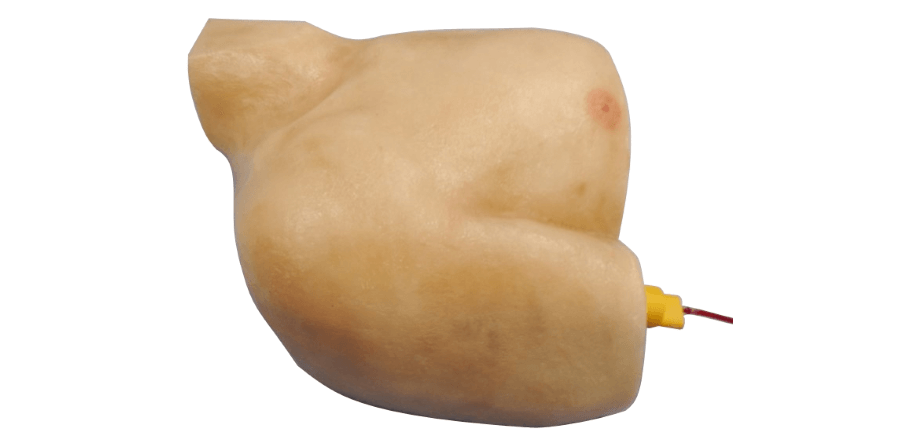SAM 3: Intraosseous Infusion (Humerus)

Price: £800.00 (ex VAT)
The Intra-Osseous Infusion model for the proximal allows needle insertion into the simulated proximal humerus, aspiration of bone marrow contents to confirm correct needle placement and then fluid infusion.
This model enables training in this vital resuscitation technique. In hypovolaemic shock associated with severe trauma, giving intravenous drugs, fluids or blood products can prove impossible due to collapse of blood vessels. Intraosseous needles may be drilled into the bone of the upper arm (head of the humerus), breast bone (sternum) or shin bone (tibia). The blood vessels within the bone cannot collapse because of the structure of the supporting honey comb-like bone. These techniques were a vital part of the damage control resuscitation chain of care developed by the United Kingdom Defence Medical Services in Afghanistan and are increasingly recognised as important techniques in pre-hospital care.
Key Features
The clavicles, acromion and proximal humerus provide the key anatomical landmarks which allow correct needle insertion into an exchangeable hollow model of a male proximal humerus, which extends to approximately 8cm above the elbow. The proximal humerus is coated with silicone and connected to a fluid out-flow with a giving set connector. This enables to model to be filled with theatrical blood, which can be aspirated to confirm correct placement and then fluid infusion commenced.
SAM 3.1 can be produced as a single function model shown above and below right, or combined with SAM 6 Pleural Space Decompression Model and SAM 5 Emergency Airway Models as illustrated below left. The model is flat backed to ensure stability during simulated procedures.
The model humerus can be exchanged for a new one after repeated use by sliding out from the posterior surface of the model.
- Ordering
- Brochure
For information on how to order one of our trauma simulator models please click here.






